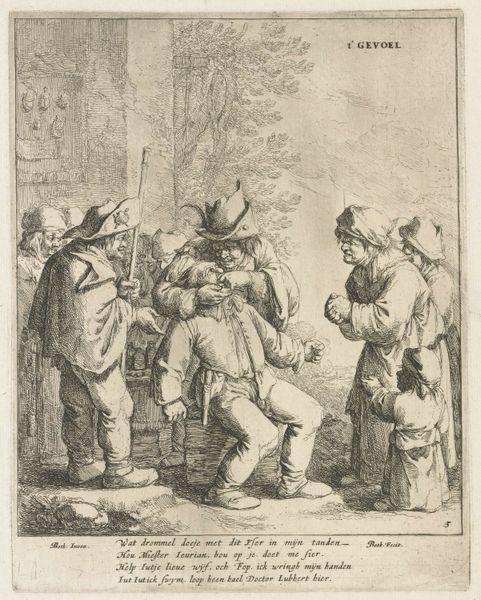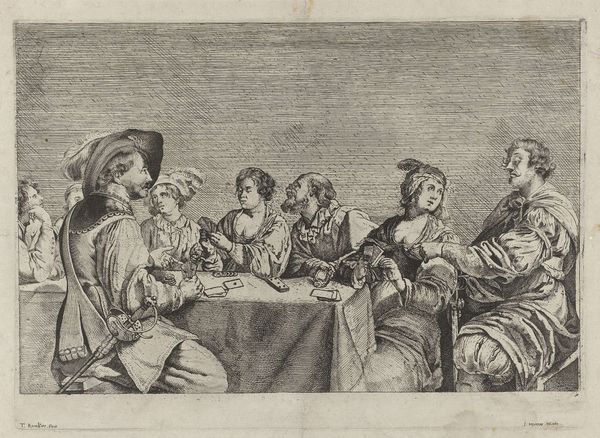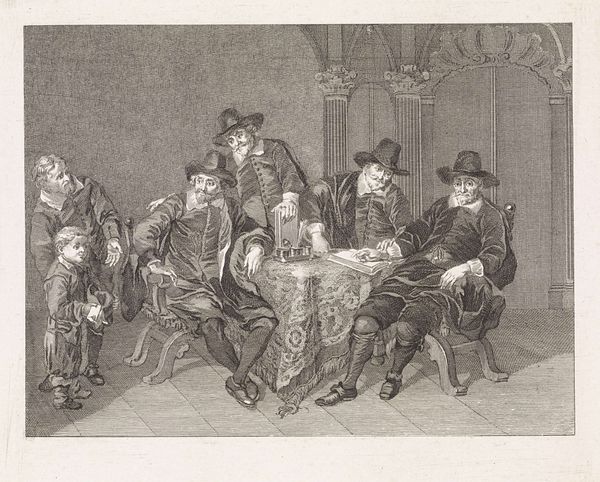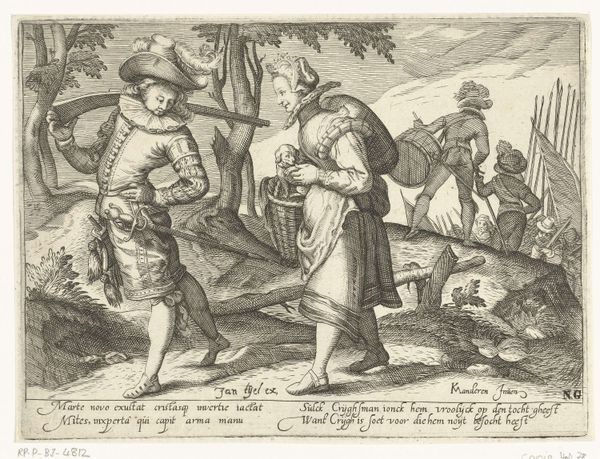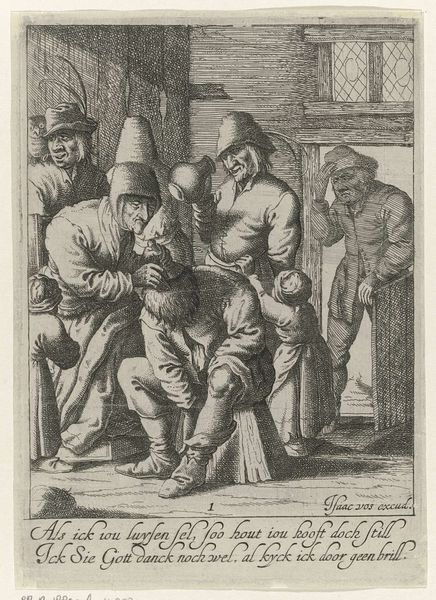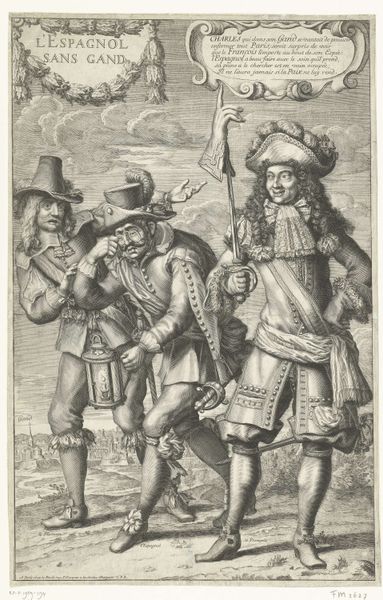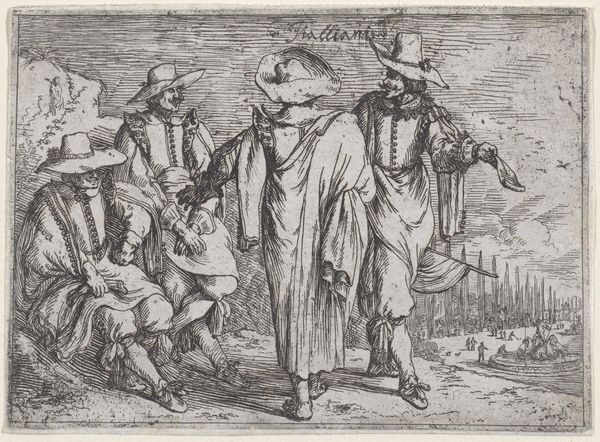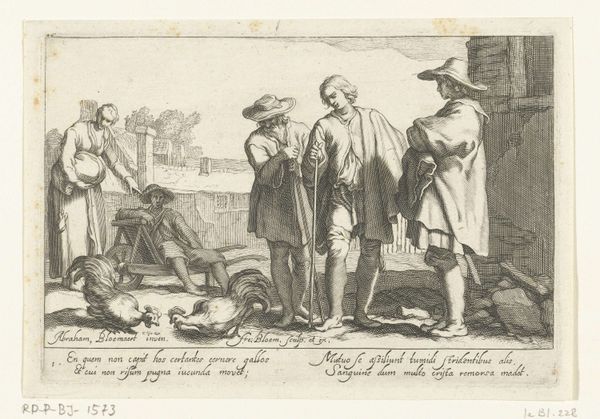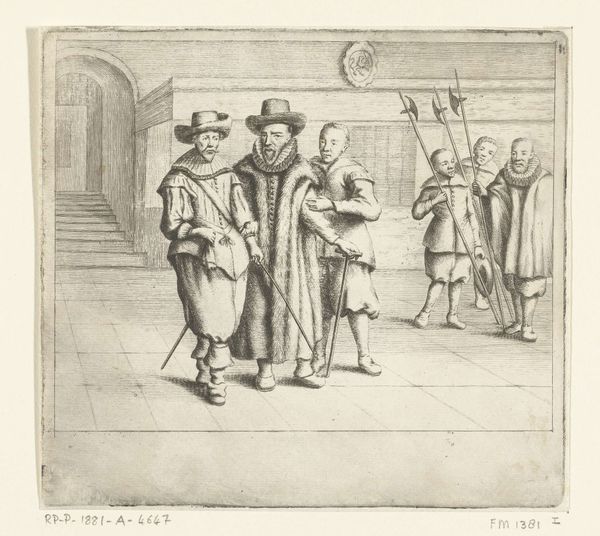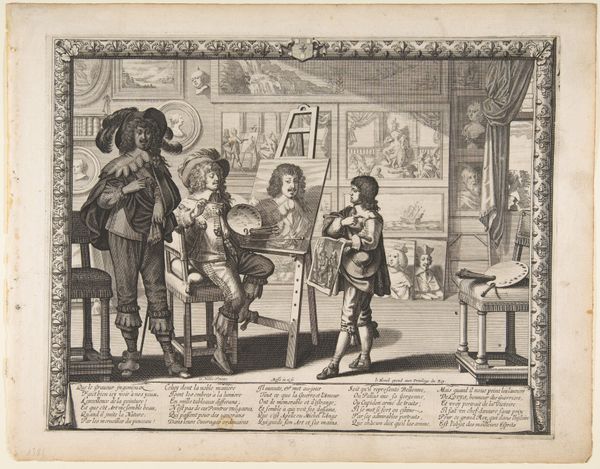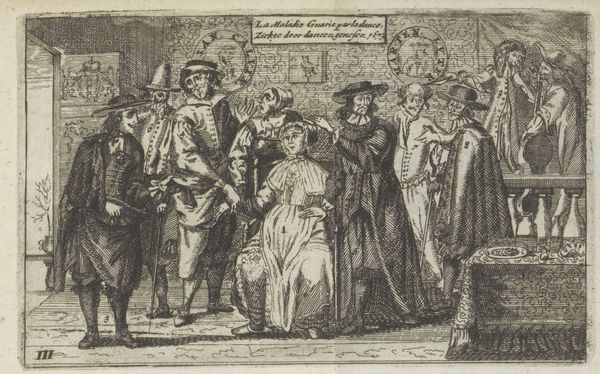
drawing, graphite
#
portrait
#
drawing
#
dutch-golden-age
#
charcoal drawing
#
pencil drawing
#
group-portraits
#
graphite
#
portrait drawing
#
genre-painting
#
history-painting
Dimensions: height 517 mm, width 707 mm
Copyright: Rijks Museum: Open Domain
Julius Henricus Quinkhard made this drawing, “De overlieden van de Handboogdoelen,” using graphite, likely on paper, sometime in the 18th century. Notice the texture and the light. Quinkhard wasn't just representing a scene; he was creating an object. It’s important to consider that graphite pencils, though seemingly simple, were a relatively recent innovation at the time, made possible by advancements in mining and manufacturing. The artist would have likely used powdered graphite mixed with clay and water to produce the different tones of the artwork. The drawing's precision and detail would have required a high level of skill and training in the artist's hand. But more than that, this artwork shows the artist's sensitivity to the material's potential. By considering the material and processes involved, we can better understand the labor and skill embedded in the work. This challenges the traditional distinction between fine art and craft, inviting us to appreciate the artwork for its making.
Comments
No comments
Be the first to comment and join the conversation on the ultimate creative platform.
